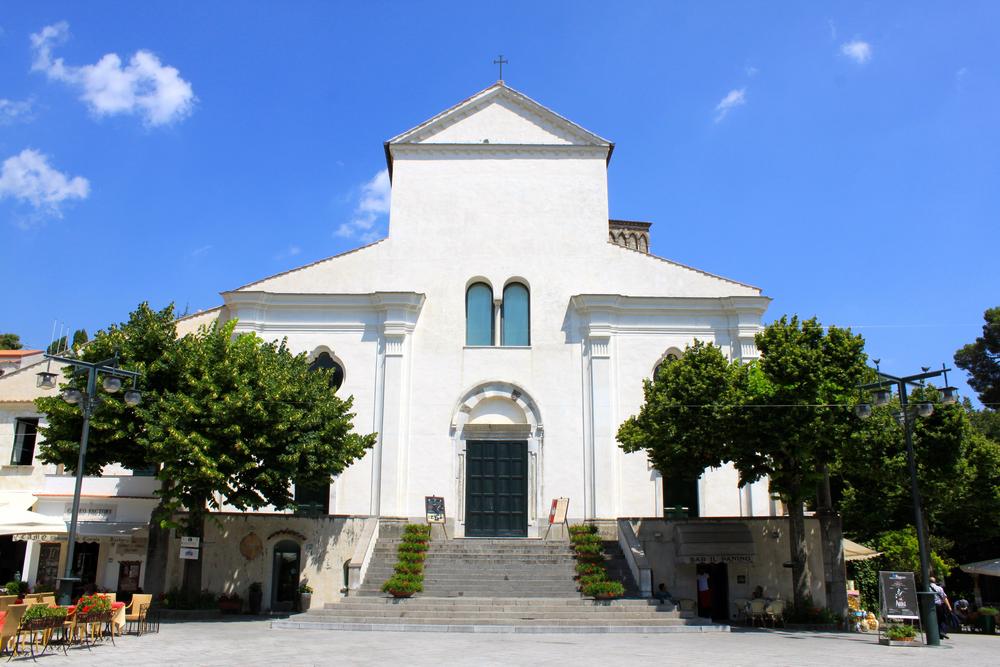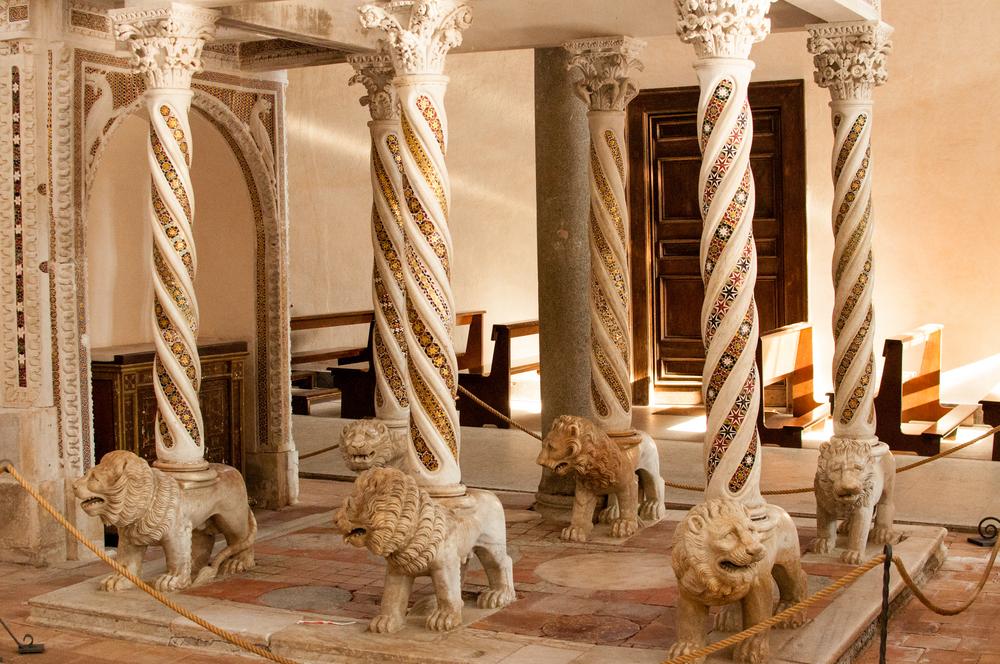Visit Ravello. Private, independent tourism initiative, not related to any civic institution.

Get the lowest rate for your Hotel in Ravello through Booking.com. Book now, pay later!
Amalfi Coast Ferry Schedule search. Find all the ferry routes, times and tickets!
SITA BUS Schedule guide. Find all the SITA BUS routes, times and tickets!
The Duomo (Cathedral), Ravello - Amalfi Coast, Italy
The Duomo, which faces the main square (Piazza Vescovado), is the spiritual and social center of Ravello.
Built in the 11th century with support from the Rufolo family, the Duomo is a combination of Baroque and Romanesque styles.
Dedicated to St. Pantaleone, the church has undergone extensive modifications and restorations over the past 900 years. The Duomo’s shining white façade dates back to the last major restoration in 1931.
The Duomo’s bell tower, which dates back to the 13th century, shows Moorish and Byzantine influence.
- Hours 9.00-12.00 & 17.30-19.00
- Duomo Museum 9.00 – 19.00
- Museum Ticket €3 / Reduced €2
- Telephone +39 089 858311
- Email segreteria@chiesaravello.com
- Address Piazza Duomo, Ravello

Presided over by a bishop, the Duomo enjoyed a high status throughout much of its history.
Today, the Duomo is primarily remembered for five attractions:
The first is the bronze door, which was temporarily removed for restoration in 2010. Constructed in 1179 by Barisano da Trani, the door is of special interest because fewer than two dozen bronze church doors are still extant in Italy, three of them by Trani.
The second item of special note is the pulpit, which is supported by six spiraled columns sitting atop marble lions.

Across from the pulpit, to the left, is the Ambo of the Epistles that boasts two wonderful mosaics of Jonah and the Whale.

The fourth area of special interest is the Chapel of St. Pantaleone the Healer, a 3rd century physician who was beheaded, on orders of the Emperor Diocletian, after he converted to Christianity. The Chapel has a small ampoule of the saint’s blood, which is said to liquefy every year on July 27th, the anniversary of his martyrdom. The chapel also has a silver bust of the town’s venerated saint.

The final attraction is the cathedral's museum, which is accessible through a side entrance on the Via Richard Wagner. While the museum’s collection is relatively small, it contains several significant sculptures and other works of art, most notably the famous marble bust believed by many to be Sigilgaida Rufolo, the wife of Nicola Rufolo, the 13th-century merchant who commissioned the cathedral’s pulpit. Other sources say the bust represents the Madonna or, alternatively, Joanna, the Queen of Naples.


Author: Robert Walker
Robert Walker, a lawyer, economist, and consultant who has worked in Washington, D.C. for over 30 years, is the author of Discovering Ravello, a short booklet on the history and attractions of Ravello. He and his wife, Chris Apel, first visited Ravello nearly 25 years ago, and have been frequent visitors ever since. His wife is an award winning artist who recently created a website (www.discoveringravello.com) to showcase her paintings of Ravello. He and his wife both lecture on Ravello. They live in Alexandria, Virginia.
Other Attractions in Ravello
...not to be missed!